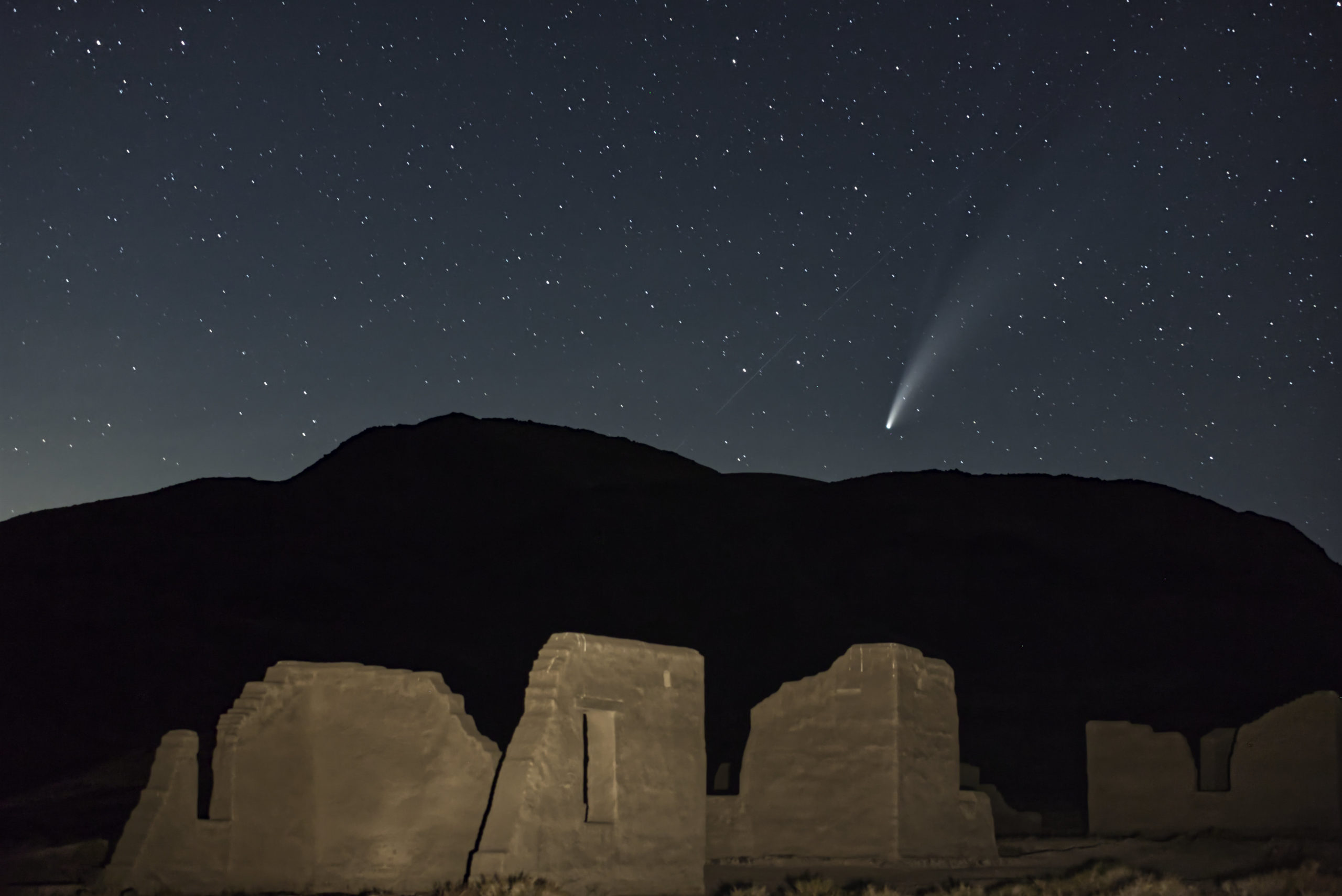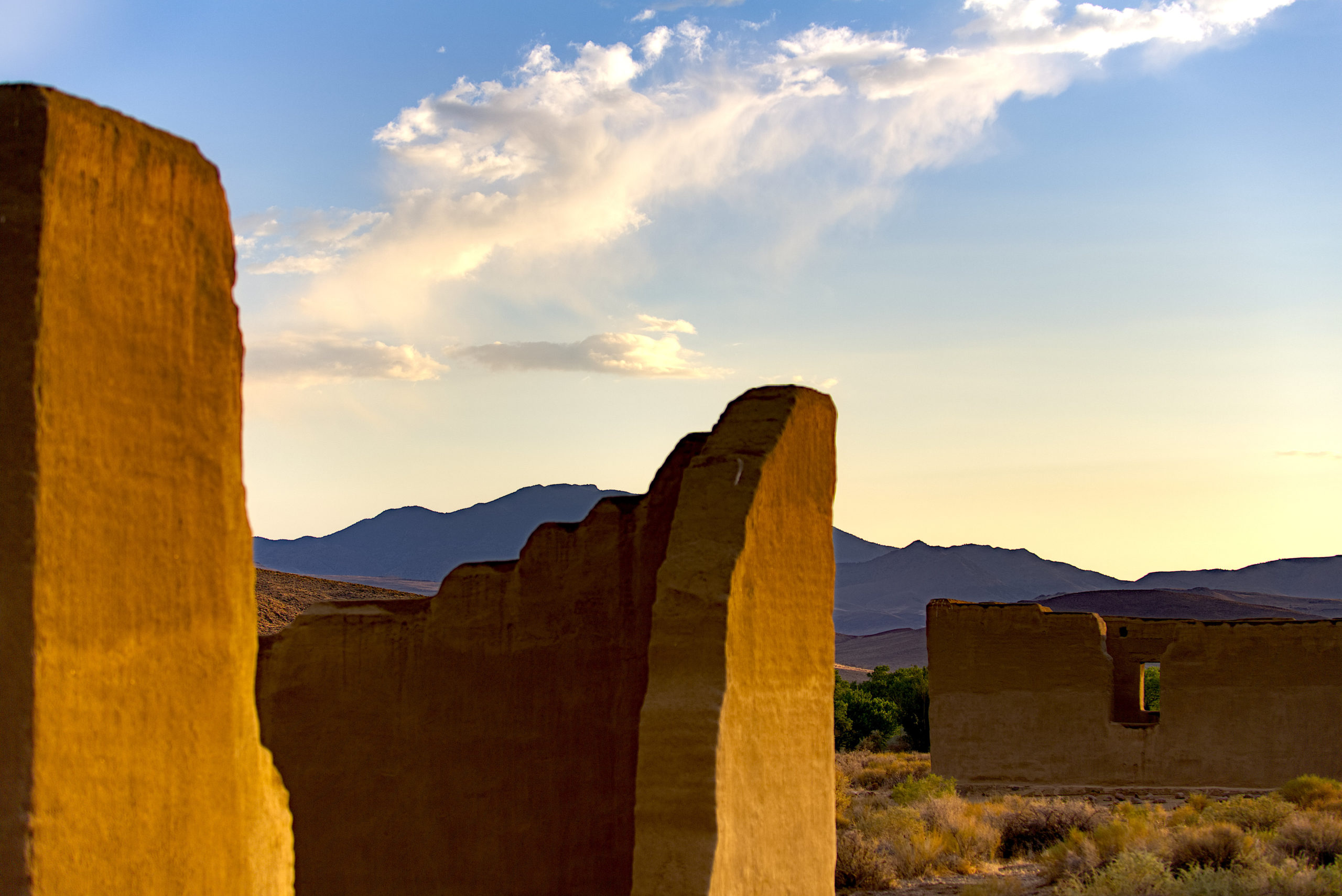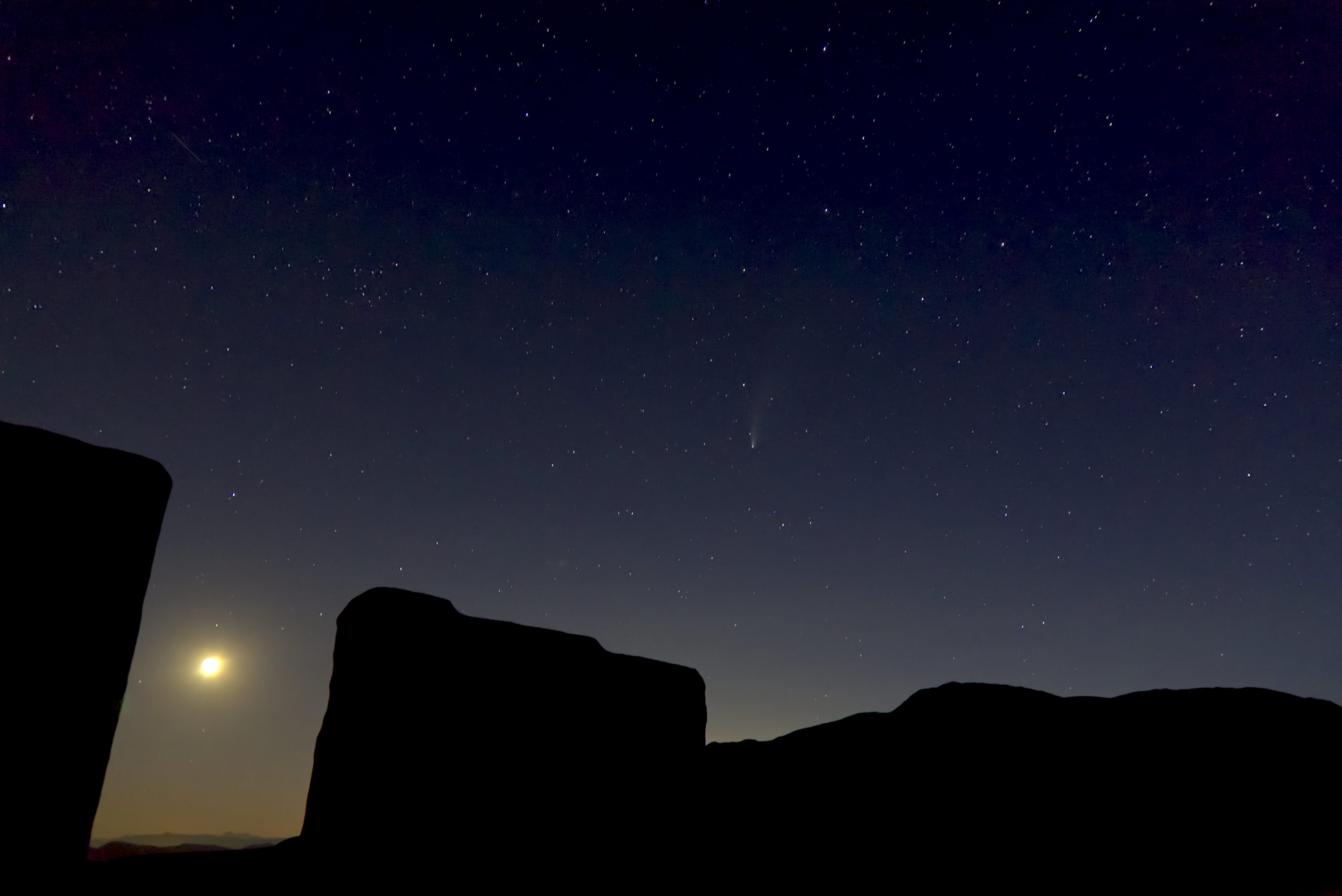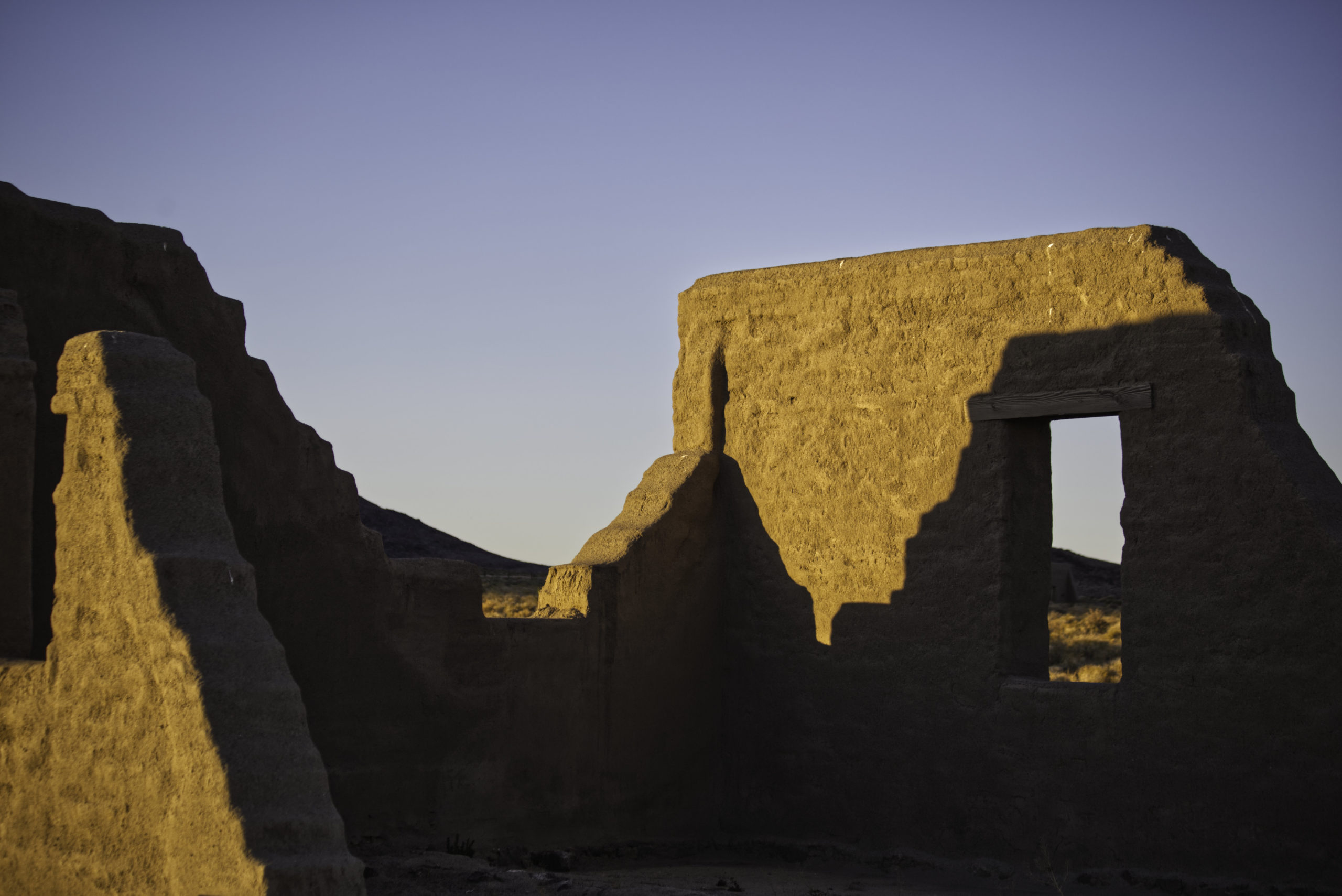Reflections of The War Comet
Fall 2020
The skies above Fort Churchill have been illuminated by several comets.

STORY & PHOTOS BY BRAD BRIGHTON
Dark sky and desolation. Ruins of a once sturdy daily life cling (with some help from park restoration) to this patch of dusty frontier. Rather than simply remind us of better times of the area, the remains are surprisingly indicative of what came before.
This dusty patch of northern Nevada hearkens back to the mid-19th century western U.S.—spare and boring in one sense. In those days, settlements of soldierly order were disrupted by the occasional excitement of whiskey (and good sense) gone by the bottle, the capture of a Confederate sympathizer, or the arrival of the Pony Express. Such is the fate of Fort Churchill State Park that the unadorned buildings and the quiet that surrounds them remain even if the drunken brawls are mostly a thing of history.
When visiting Fort Churchill itself, the relatively similar visuals boost the imagination, helping enter the time and mind of its inhabitants. Thanks to popular media, U.S. Civil War-era garrisons aren’t completely unfamiliar in the broad strokes. The general comings and goings of daily western life fit a known (if stereotypical) pattern to modern musing.
THE OLD SKY
Sparking a departure from the commonplace, celestial events cause wonder and excitement even to today’s “enlightened observers.” Consider then what it must have been like to be stationed or simply living in the Nevada desert, pre-industrially dark, and witness the Great Comet of 1861 (C/1861 J1). The fort itself was barely a year old that July and still settling in.
Contemporary accounts from around the world mark that Great Comet (a loosely defined term commonly representing those visible to the naked eye) as a spectacle, even casting shadows at night. Though it was first observed in Australia in May of that year, word of its existence spread more slowly than visibility of the comet itself, so it became visible in the northern hemisphere (and western U.S.) before any announcement arrived.
What a sight it must have been in the middle of the Nevada desert to a bunch of bored (and occasionally drunk) U.S. soldiers and community members! Add to that the violent unrest in the country, where sightings of the comet elsewhere christened it “The War Comet,” and—as human interpretations of comets are wont to do—entangled it in the news reporting and political climate of the time.
THE NEW SKY
In 2020, we were treated to a new spectacle. Comet NEOWISE (C/2020 F3) was not a return of the same comet. It did not cast the same literal shadows. Still, its appearance 159 years after its sibling does give us a rare opportunity to time-travel a little more tangibly, to put ourselves a little closer to our territorial ancestors, to marvel at our universe, its moving pieces, and how history, always fated to repeat itself, does so in ways both predictable and random.
 Staring at the comet’s tail gracing the northern sky through the window gap of the barracks building at Fort Churchill and it’s not a great leap to put yourself in the place of a soldier stationed on the “edges of civilization” (in his mind of the time), marveling aloud at the sight, probably holding conflicting guesses as to what it all means.
Staring at the comet’s tail gracing the northern sky through the window gap of the barracks building at Fort Churchill and it’s not a great leap to put yourself in the place of a soldier stationed on the “edges of civilization” (in his mind of the time), marveling aloud at the sight, probably holding conflicting guesses as to what it all means.
As we gazed up at the fleeting sight of NEOWISE and consider the past it brings to mind, perhaps the biggest wonder of all is that for northern Nevadans and those who choose to visit, how much awe and wonder and history can all be wrapped up in some mud on the ground, just a few figurative steps from our back door, and some water and dust in the sky.
VISIT
Ft. Churchill State Historic Park
10000 US-95 ALT
Silver Springs, NV 89429
parks.nv.gov, 775-577-2345 

